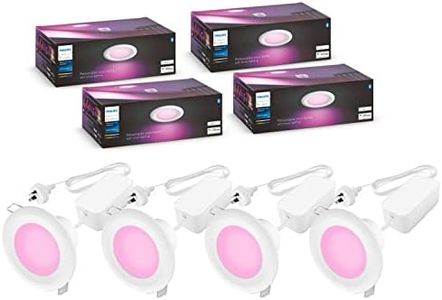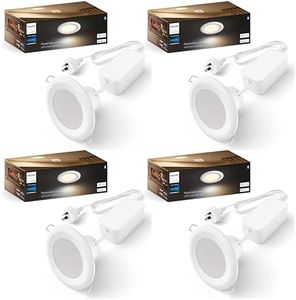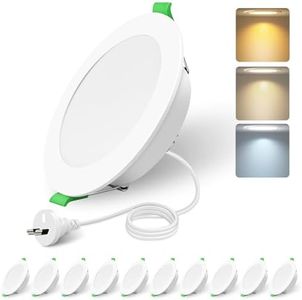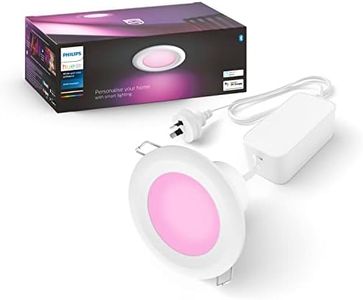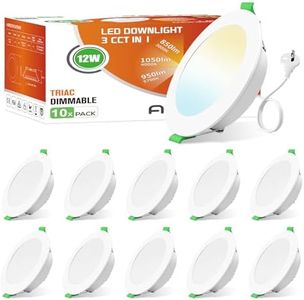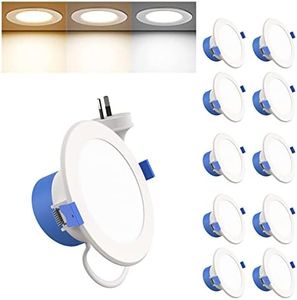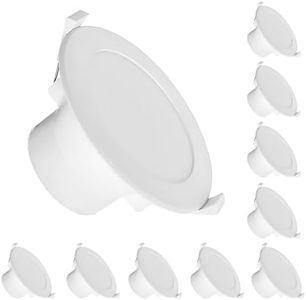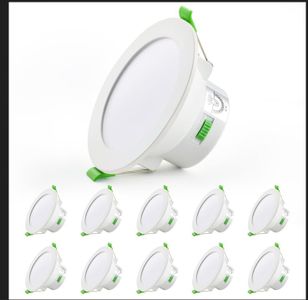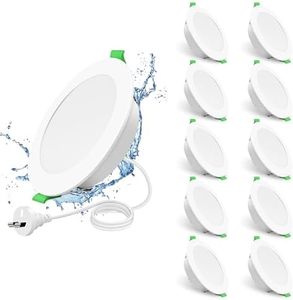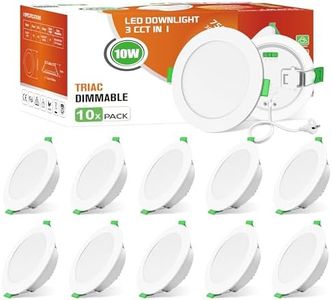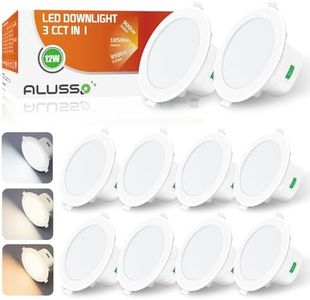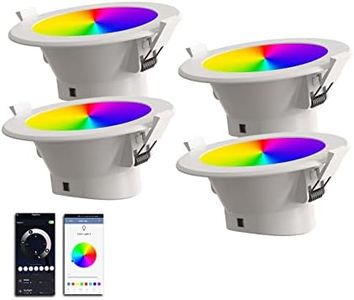We Use CookiesWe use cookies to enhance the security, performance,
functionality and for analytical and promotional activities. By continuing to browse this site you
are agreeing to our privacy policy
10 Best Led Downlight
From leading brands and best sellers available on the web.Buying Guide for the Best Led Downlight
Choosing the right LED downlight can really transform the atmosphere and efficiency of any room in your home or office. It’s important to think about how much light you need, the mood you want to create, and where the lights will be installed. Understanding the key features will help you select a downlight that suits both your practical and decorative needs, ensuring the best lighting experience for your space.WattageWattage indicates how much electricity the LED downlight uses, and generally, higher wattage provides brighter light. It's important because it helps you estimate the brightness as well as potential energy costs. Most household applications use downlights in the range of 5-18 watts, while commercial or larger spaces might need up to 24 watts or more. For cozy rooms or accent lighting, lower wattage is often sufficient, but for kitchens, offices, or places where you need more illumination, go for higher wattage.
LumensLumens measure the actual amount of light a downlight emits. This is crucial because it tells you how bright the light will be, helping you match it to the size and use of your room. Lower lumens (around 400-700) work for hallways or bedrooms where soft light is preferred. Medium lumens (700-1200) are good for kitchens, workspaces, or living rooms, while high lumens (1200 and above) are best for areas needing clear, strong light like bathrooms or studies. Pick based on how bright you want your space to feel.
Color TemperatureColor temperature, measured in Kelvins (K), decides whether the light looks warm (yellow), neutral, or cool (blueish). It’s important because it affects the mood of your space. Warm white (2700-3000K) creates a relaxing and cozy atmosphere, ideal for living rooms and bedrooms. Neutral white (3500-4100K) is suitable for kitchens and bathrooms, giving a bright but comfortable feel. Cool white (5000K and above) is best for workspaces or garages, where sharp, clear light is needed. Choose the color temperature based on the vibe you want for the room.
Beam AngleBeam angle describes how wide the light spreads from the downlight. A narrow angle (15-40 degrees) gives focused light, useful for highlighting artwork or specific areas. A medium angle (40-60 degrees) is good for general use in most rooms. Wide angles (over 60 degrees) spread light broadly, covering larger areas and reducing the number of fixtures needed. Think about what you want to light up and choose the angle that matches, whether it’s a specific spot or the whole room.
DimmabilityDimmability means whether the LED downlight can be adjusted to different levels of brightness. This feature is important if you want flexibility to create different moods or save energy by lowering the brightness when full light isn’t needed. If you want to use dimmers, make sure the downlight is compatible, as not all LEDs are. Decide based on how often you would like to adjust the atmosphere of your room or if you have dimmer switches installed.
Housing and Installation TypeHousing and installation type refers to how the downlight is mounted in your ceiling—either recessed into the ceiling or surface-mounted. It’s important since your ceiling design and available space determine what will fit. Recessed lights are flush with the ceiling, creating a clean modern look, while surface-mounted options can be installed where recessed ones won’t fit. Check your ceiling’s structure and pick the one that best matches your installation needs.
IP RatingIP rating tells you how resistant the downlight is to dust and moisture. This is especially important for bathrooms, kitchens, or outdoor areas. A low IP rating (like IP20) is fine for dry indoor spaces, while higher ratings (IP44 and above) are needed for damp or wet areas. Always check your installation environment and choose lights with a suitable IP rating for safety and durability.
